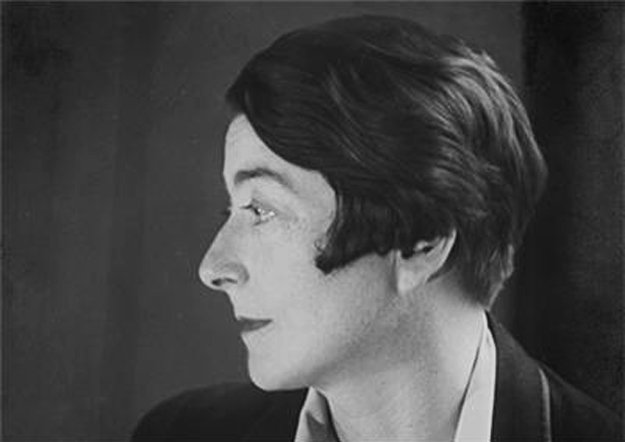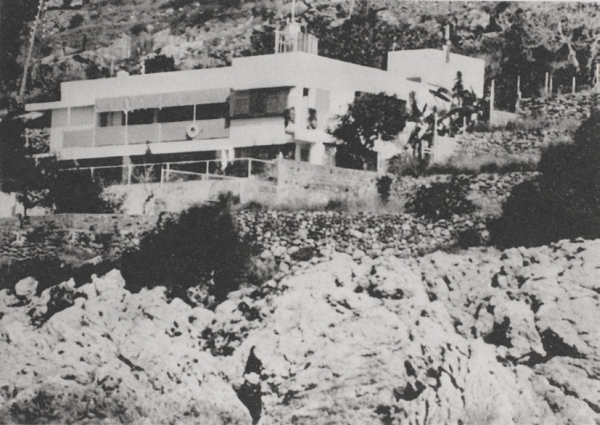Architecture | ClassiCon | Design Calendar | Designer | Producer | Product
As previously noted in these pages the (hi)story of modernism is largely one of successful male/female partnerships, the most famous questionably being Ludwig Mies van der Rohe and Lilly Reich or Le Corbusier and Charlotte Perriand in the main period of inter-war European modernism and Charles and Ray Eames in context of the post-war American adaptation.
Yet it is also a (hi)story with only very few identifiable female leads. From the examples above Lilly Reich, Charlotte Perriand and Ray Eames are all popularly perceived as the "wee women" on the side of the creative male. At best responsible for the aesthetic, "female", qualities that round-off the central, important, technical creative talents of the male. But only rarely individually acknowledged as the talented and successful designers, architects or artists the were.
There are of course some shinning examples of successful female modernist architects and designers who are accepted without the need of a male "qualifier" , the most notable being Eileen Gray.

Born on August 9th 1878 in Enniscorthy, County Wexford, Ireland as the youngest of five children to the Scottish landscape painter James McLaren Smith and his wife Eveleen Pounden, the 19th Lady Gray, Eileen Gray studied at the Slade School of Fine Art in London before moving to Paris in 1902. Eileen Gray first achieved the attention of a wider public with her oriental lacquer works, a process she learnt first in London at the Dean Street workshop of a Mr. D. Charles and subsequently in Paris under the guidance of the Japanese lacquer master Seizo Sugawara. In 1913 the Paris fashion styler Jacques Doucet purchased her lacquer folding screen Le Destin and subsequently commissioned further works from her; commissions which not only helped Eileen Gray financially, but much more introduced her to an ever wider range of potential clients and customers. One such was a certain Madam Mathieu-Lévy who in 1919 commissioned Eileen Gray to redesign the interior of her apartment, Gray's very first such commission and one that resulted in some of Eileen Gray's earliest furniture pieces including the Serpent Chair, Bibendum Chair and the monumentally grotesque, yet somehow endearingly charming and lovable, Pirogue Sofa.
In addition to creating works on commission and for interior design projects in 1922 Eileen Gray established her own shop, Galérie Jean Désert - the "Désert" being a reference to the fond memories of her numerous trips to the deserts of North Africa, the "Jean" because she felt, not unreasonably, that a male gallery owner would be taken more seriously than a female. In addition to selling works by Eileen Gray and promoting her interior design services, Galérie Jean Désert also sold carpets sourced from artisan producers in Morocco. Although such shops were known in the Paris of that period, Eileen Gray was one of the very first designers to attempt to market their own work through their own shop, and certainly one of the first females anywhere to attempt such.
Eileen Gray's first contact with architecture came through her relationship with the Romanian architecture critic and journalist Jean Badovici, an interest that achieved its first physical manifestation in one of Eileen Gray's most celebrated works, the so-called house E-1027 in Roquebrune-Cap-Martin on the French Côte d’Azur. Teetering precariously on the rocks above the Mediterranean E-1027 is not just an architectural wonder and testament to Eileen Gray's single minded pursuit of her goals, but also gifted the world some of her most important furniture designs, including the Non Conformist Chair, the Occasional Table and the E-1027 Adjustable Table.
Buoyed by the success of E-1027, and with Galérie Jean Désert suffering in the harsh economic climate of the late 1920s, Eileen Gray decided in 1929 to close Galérie Jean Désert and to focus on architecture rather than her artistic and design projects; a decision which subsequently led to some 45 projects from which seven were realised, mainly for herself, including the 1932 Villa Tempe a Pailla in Castellar and Villa Lou Pérou, Eileen Gray's last architecture project and one which involved converting an abandoned cabanon in a vineyard near Saint-Tropez.

Being, as she was, a financially secure well educated, artistically inclined child born of the landed petite noblesse and living a single life in early 20th century Paris, Eileen Gray's biography is awash with those tales and anecdotes that can only come from belonging to that class and that age: being made the subject of a poem by disturbing occultist Aleister Crowley, getting lost in the Tunisian desert and spending the night smoking hashish with nomadic tribesman, ballooning with Rolls Royce co-founder the Hon. Charles Stewart Rolls, or, and perhaps the most deliciously debauched behaviour of all, cruising the streets of Paris in her Chenard-Walcker convertible with her lover, the nightclub chanteuse Damia. Damia's pet panther sat in the back seat. We can't guarantee that's true. It may just be apocryphal. But we do so hope it is true.
Post World War II it was a lot quieter around Eileen Gray, there were certainly no more "panthers in roadsters" episodes, and Eileen Gray was in real danger of slipping into an discourteous anonymity were it not for a delightful twist of fate. Following a 1968 review of her oeuvre by Joseph Rykwert in the Italian architecture and design magazine Domus, a 1972 Paris auction of Jacques Doucet's estate saw Yves Saint Laurent acquire her Le Destin folding screen. A purchase which led to renewed interest in this "unknown" artist who so fascinated Yves Saint Laurent. Thus, just as the original purchase of Le Destin by a fashion styler led to initial interest in Eileen Gray, the purchase of Le Destin by a fashion styler led to renewed interest in Eileen Gray. In the final years of her life Eileen Gray struck up a friendship with the London based furniture dealer Zeev Aram, who subsequently acquired the exclusive rights to Eileen Gray's furniture designs, designs which today are produced under exclusive license by Munich based manufacturer ClassiCon.
Eileen Gray died in Paris in 1976; however, thanks to the efforts of Aram London, ClassiCon and all those involved in trying to restore and repair E-1027, Eileen Gray remains as present, contemporary and effortlessly stylish as ever.
Happy Birthday Eileen Gray!